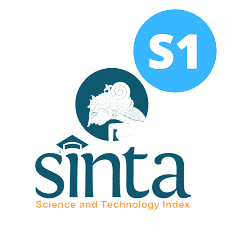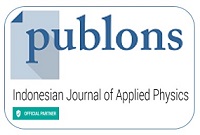Solar System Constraints on the Yukawa Potential in f(R) Gravity
Abstract
The gravity theory is a modification of general relativity that yields a Yukawa gravitational potential in the weak-field limit. This potential modifies the Newtonian potential by adding an exponential term that depends on the parameters and . In this study, we test the consistency of the Yukawa potential with observational data on the perihelion precession of planets in the solar system. Using observational data from the planets, we estimate the parameters and that are consistent with observations. Additionally, we analyze the constraints imposed by the Parametrized Post-Newtonian (PPN) formalism on these parameters. The results indicate that the parameter can be taken within the range , with a relatively small value of . Observational constraints from the Cassini and MESSENGER missions also provide tight bounds on the PPN parameters and . These findings suggest that the Yukawa potential in gravity can explain gravitational phenomena on the scale of the solar system without violating existing observational constraints.
Keywords
Full Text:
PDFReferences
1 Will, C. M. (2014). The confrontation between general relativity and experiment. Living Reviews in Relativity, 17(1), 1–117.
2 GRAVITY Collaboration, Abuter R., Amorim A., Bauböck M., Berger J. P., Bonnet H., Brandner W., Cardoso V., Clénet Y., de Zeeuw P. T., Dexter J., Eckart A., Eisenhauer F., Förster Schreiber N. M., Garcia P., Gao F., Gendron E., Genzel R., Gillessen S., … Zins G. (2020). Detection of the Schwarzschild precession in the orbit of the star S2 near the Galactic centre massive black hole. Astron. Astrophys., 636, L5. https://doi.org/10.1051/0004-6361/202037813
3 GRAVITY Collaboration, Abuter R., Amorim A., Anugu N., Bauböck M., Benisty M., Berger J. P., Blind N., Bonnet H., Brandner W., Buron A., Collin C., Chapron F., Clénet Y., dCoudé u Foresto V., de Zeeuw P. T., Deen C., Delplancke-Ströbele F., Dembet R., … Zins G. (2018). Detection of the gravitational redshift in the orbit of the star S2 near the Galactic centre massive black hole . Astron. Astrophys., 615, L15. https://doi.org/10.1051/0004-6361/201833718
4 Starobinsky, A. A. (1980). A new type of isotropic cosmological models without singularity. Phys. Lett. B, 91(1), 99–102. https://doi.org/https://doi.org/10.1016/0370-2693(80)90670-X
5 Blumenthal, G. R., Faber, S. M., Primack, J. R., & Rees, M. J. (1984). Formation of Galaxies and Large Scale Structure with Cold Dark Matter. Nature, 311, 517–525. https://doi.org/10.1038/311517a0
6 Peebles, P. ~J. ~E. (1982). Large-scale background temperature and mass fluctuations due to scale-invariant primeval perturbations. Astrophys. J. Lett., 263, L1–L5. https://doi.org/10.1086/183911
7 Peebles, P. J. E., & Ratra, B. (2003). The cosmological constant and dark energy. Rev. Mod. Phys., 75(2), 559–606. https://doi.org/10.1103/RevModPhys.75.559
8 Capozziello, S. (2002). CURVATURE QUINTESSENCE. Int. J. Mod. Phys. D, 11(04), 483–491. https://doi.org/10.1142/S0218271802002025
9 Capozziello, S., Cardone, V. F., & Troisi, A. (2007). Low surface brightness galaxy rotation curves in the low energy limit of Rn gravity: no need for dark matter? Mon. Not. Roy. Astron. Soc., 375(4), 1423–1440. https://doi.org/10.1111/j.1365-2966.2007.11401.x
10 Starobinsky, A. A. (2007). Disappearing cosmological constant in f(R) gravity. JETP Lett., 86, 157–163. https://doi.org/10.1134/S0021364007150027
11 Perlmutter, S., Aldering, G., Goldhaber, G., Knop, R. A., Nugent, P., Castro, P. G., Deustua, S., Fabbro, S., Goobar, A., Groom, D. E., Hook, I. M., Kim, A. G., Kim, M. Y., Lee, J. C., Nunes, N. J., Pain, R., Pennypacker, C. R., Quimby, R., Lidman, C., … Project, T. S. C. (1999). Measurements of Ω and Λ from 42 High-Redshift Supernovae. Astrophys. J., 517(2), 565. https://doi.org/10.1086/307221
12 Riess, A. G., Filippenko, A. V, Challis, P., Clocchiatti, A., Diercks, A., Garnavich, P. M., Gilliland, R. L., Hogan, C. J., Jha, S., Kirshner, R. P., Leibundgut, B., Phillips, M. M., Reiss, D., Schmidt, B. P., Schommer, R. A., Smith, R. C., Spyromilio, J., Stubbs, C., Suntzeff, N. B., & Tonry, J. (1998). Observational Evidence from Supernovae for an Accelerating Universe and a Cosmological Constant. Astron. J., 116(3), 1009. https://doi.org/10.1086/300499
13 Abercrombie, D., & others. (2020). Dark Matter benchmark models for early LHC Run-2 Searches: Report of the ATLAS/CMS Dark Matter Forum. Phys. Dark Univ., 27, 100371. https://doi.org/10.1016/j.dark.2019.100371
14 PICO Collaboration, Amole, C., Ardid, M., Arnquist, I. J., Asner, D. M., Baxter, D., Behnke, E., Bhattacharjee, P., Borsodi, H., Bou-Cabo, M., Brice, S. J., Broemmelsiek, D., Clark, K., Collar, J. I., Cooper, P. S., Crisler, M., Dahl, C. E., Das, M., Debris, F., … Zhang, J. (2016). Improved dark matter search results from PICO-2L Run 2. Phys. Rev. D, 93(6), 61101. https://doi.org/10.1103/PhysRevD.93.061101
15 Carroll, S. M. (2001). The Cosmological constant. Liv. Rev. Relativ., 4, 1. https://doi.org/10.12942/lrr-2001-1
16 Weinberg, S. (1989). The cosmological constant problem. Rev. Mod. Phys., 61(1), 1–23. https://doi.org/10.1103/RevModPhys.61.1
17 Odintsov, S. D., Oikonomou, V. K., & Sharov, G. S. (2023). Early dark energy with power-law F(R) gravity. Phys. Lett. B, 843, 137988. https://doi.org/https://doi.org/10.1016/j.physletb.2023.137988
18 Stabile, A., & Capozziello, S. (2013). Galaxy rotation curves in f(R,φ) gravity. Phys. Rev. D, 87(6), 64002. https://doi.org/10.1103/PhysRevD.87.064002
19 Carroll, S. M., Duvvuri, V., Trodden, M., & Turner, M. S. (2004). Is cosmic speed-up due to new gravitational physics? Phys. Rev. D, 70(4), 43528. https://doi.org/10.1103/PhysRevD.70.043528
20 Nojiri, S., & Odintsov, S. D. (2003). Quantum de Sitter cosmology and phantom matter. Phys. Lett. B, 562(3), 147–152. https://doi.org/https://doi.org/10.1016/S0370-2693(03)00594-X
21 Kalita, S. (2018). Gravitational Theories near the Galactic Center. Astrophys. J., 855(1), 70. https://doi.org/10.3847/1538-4357/aaadbb
22 Hees, A., Do, T., Ghez, A. M., Martinez, G. D., Naoz, S., Becklin, E. E., Boehle, A., Chappell, S., Chu, D., Dehghanfar, A., Kosmo, K., Lu, J. R., Matthews, K., Morris, M. R., Sakai, S., Schödel, R., & Witzel, G. (2017). Testing General Relativity with Stellar Orbits around the Supermassive Black Hole in Our Galactic Center. Phys. Rev. Lett., 118(21), 211101. https://doi.org/10.1103/PhysRevLett.118.211101
23 Adelberger, E. G., Gundlach, J. H., Heckel, B. R., Hoedl, S., & Schlamminger, S. (2009). Torsion balance experiments: A low-energy frontier of particle physics. Progress in Particle and Nuclear Physics, 62(1), 102–134. https://doi.org/https://doi.org/10.1016/j.ppnp.2008.08.002
24 Capozziello, S., De Filippis, E., & Salzano, V. (2009). Modelling clusters of galaxies by f (R) gravity. Monthly Notices of the Royal Astronomical Society, 394(2), 947–959.
25 Capozziello, S., Stabile, A., & Troisi, A. (2007). Newtonian limit of f (R) gravity. Physical Review D—Particles, Fields, Gravitation, and Cosmology, 76(10), 104019.
26 Cardone, V. F., & Capozziello, S. (2011). Systematic biases on galaxy haloes parameters from Yukawa-like gravitational potentials. Monthly Notices of the Royal Astronomical Society, 414(2), 1301–1313. https://doi.org/10.1111/j.1365-2966.2011.18465.x
27 Dong, Y., Shao, L., Hu, Z., Miao, X., & Wang, Z. (2022). Prospects for constraining the Yukawa gravity with pulsars around Sagittarius A. Journal of Cosmology and Astroparticle Physics, 2022(11), 51.
28 Miao, X., Shao, L., & Ma, B.-Q. (2019). Bounding the mass of graviton in a dynamic regime with binary pulsars. Physical Review D, 99(12), 123015.
29 Amendola, L., & Quercellini, C. (2004). Skewness as a test of the equivalence principle. Physical Review Letters, 92(18), 181102.
30 Moffat, J. W. (2006). Scalar–tensor–vector gravity theory. Journal of Cosmology and Astroparticle Physics, 2006(03), 4.
31 Moffat, J. W. (2005). Gravitational theory, galaxy rotation curves and cosmology without dark matter. Journal of Cosmology and Astroparticle Physics, 2005(05), 3.
32 Reynaud, S., & Jaekel, M.-T. (2005). Testing the Newton law at long distances. International Journal of Modern Physics A, 20(11), 2294–2303.
33 Sealfon, C., Verde, L., & Jimenez, R. (2005). Limits on deviations from the inverse-square law on megaparsec scales. Physical Review D—Particles, Fields, Gravitation, and Cosmology, 71(8), 83004.
34 Sereno, M., & Jetzer, P. (2006). Dark matter versus modifications of the gravitational inverse-square law: results from planetary motion in the Solar system. Monthly Notices of the Royal Astronomical Society, 371(2), 626–632.
35 White, M., & Kochanek, C. S. (2001). Constraints on the long-range properties of gravity from weak gravitational lensing. The Astrophysical Journal, 560(2), 539.
36 Borka, D., Jovanović, V. B., & Jovanović, P. (2023). Bounds on graviton mass and constraining Yukawa-like gravitational potential from planetary motion in the Solar System. Filomat, 37(25), 8591–8601. https://doi.org/10.2298/FIL2325591B
37 Capozziello, S., Borka, D., Jovanović, P., & Jovanović, V. B. (2014). Constraining extended gravity models by S2 star orbits around the Galactic Centre. Physical Review D, 90(4), 44052.
38 Yukawa, H. (1935). On the Interaction of Elementary Particles I. Proc. Phys. Math. Soc. Jap., 17, 48–57. https://doi.org/10.1143/PTPS.1.1
39 Adkins, G. S., & McDonnell, J. (2007). Orbital precession due to central-force perturbations. Physical Review D—Particles, Fields, Gravitation, and Cosmology, 75(8), 82001.
40 Chashchina, O. I., & Silagadze, Z. K. (2008). Remark on orbital precession due to central-force perturbations. Physical Review D—Particles, Fields, Gravitation, and Cosmology, 77(10), 107502.
41 Nyambuya, G. G. (2010). Azimuthally symmetric theory of gravitation–I. On the perihelion precession of planetary orbits. Monthly Notices of the Royal Astronomical Society, 403(3), 1381–1391.
42 Capozziello, S., & Troisi, A. (2005). Parametrized post-Newtonian limit of fourth order gravity inspired by scalar-tensor gravity. Physical Review D—Particles, Fields, Gravitation, and Cosmology, 72(4), 44022.
43 Bertotti, B., Iess, L., & Tortora, P. (2003). A test of general relativity using radio links with the Cassini spacecraft. Nature, 425(6956), 374–376.
44 Genova, A., Mazarico, E., Goossens, S., Lemoine, F. G., Neumann, G. A., Smith, D. E., & Zuber, M. T. (2018). Solar system expansion and strong equivalence principle as seen by the NASA MESSENGER mission. Nature Communications, 9(1), 289.
45 D’Addio, A. (2021). S-star dynamics through a Yukawa–like gravitational potential. Physics of the Dark Universe, 33, 100871.
46 Kalita, S. (2020). The Galactic Center Black Hole, Sgr A*, as a Probe of New Gravitational Physics with the Scalaron Fifth Force. Astrophys. J., 893(1), 31. https://doi.org/10.3847/1538-4357/ab7af7
47 Kalita, S. (2021). Scalaron Gravity near Sagittarius A*: Investigation of Spin of the Black Hole and Observing Requirements. Astrophys. J., 909(2), 189. https://doi.org/10.3847/1538-4357/abded5
48 Lalremruati, P. C., & Kalita, S. (2022). Is It Possible to See the Breaking Point of General Relativity near the Galactic Center Black Hole? Consideration of Scalaron and Higher-dimensional Gravity. Astrophys. J., 925(2), 126. https://doi.org/10.3847/1538-4357/ac3af0
49 Paul, D., Kalita, S., & Talukdar, A. (2023). Unscreening of f(R) gravity near the galactic center black hole: Testability through pericenter shift below S0-2’s orbit. Int. J. Mod. Phys. D, 32(04), 2350021. https://doi.org/10.1142/S0218271823500219
50 Iorio, L. (2007). Constraints on the range λ of Yukawa-like modifications to the Newtonian inverse-square law of gravitation from Solar System planetary motions. Journal of High Energy Physics, 2007(10), 41.
51 Iorio, L. (2009). The recently determined anomalous perihelion precession of Saturn. The Astronomical Journal, 137(3), 3615.
52 Cardone, V. F., Angus, G., Diaferio, A., Tortora, C., & Molinaro, R. (2011). The modified Newtonian dynamics fundamental plane. Monthly Notices of the Royal Astronomical Society, 412(4), 2617–2630.
53 D’Agostino, R., Jusufi, K., & Capozziello, S. (2024). Testing Yukawa cosmology at the Milky Way and M31 galactic scales. The European Physical Journal C, 84(4), 1–17.
54 Jusufi, K., Leon, G., & Millano, A. D. (2023). Dark Universe phenomenology from Yukawa potential? Physics of the Dark Universe, 42, 101318.
Refbacks
- There are currently no refbacks.
















